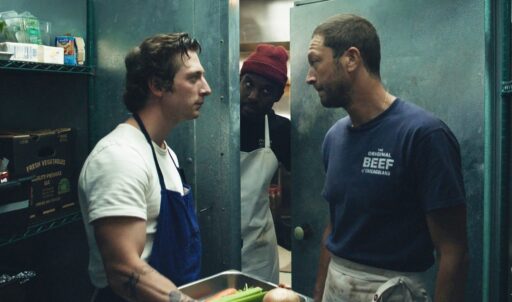I recently paid a friend of mine to comment on a nonfiction manuscript I’ve been working on far too long. I wanted a trustworthy reader to whom I felt responsible, someone who would bring fresh, discerning eyes to an on again, off again project I no longer knew how to write. She agreed, read through the eight draft chapters of a projected sixteen, and sent back a thorough critique with plenty of line edits and a summary assessment. I’ll spare you the details except to say that in the kindest, most helpful way, she kicked my butt.
I was writing about a family I had known for more than twenty years whose lives, cultural histories, and social conditions are very different from mine. Even though I had their full consent and had shared chapter drafts with them for comment and correction, I worried about the ethics and optics of a privileged white male telling their story. Accordingly, I had been trying to efface myself as the narrator. I hoped the tale would reveal itself long quotations from recorded interviews, as if it weren’t obvious who asked the questions, selected the excerpts, and arranged them in a manner than hinted at rather than showed what I imagined was so important. Perhaps another, more skilled author could have pulled it off, but I wasn’t up to that ill-advised task. In seeking safety in a peculiar narrative effect, I forgot everything I knew about storytelling: show, don’t tell; there’s no story without a conflict; show the reader she should care; use sensory detail and active verbs; don’t give away too much too soon.
Now I’m busily rewriting, turning a jumbled sequence of remembered events into what I hope becomes a coherent and engaging plot, accepting that I can’t hide my privilege, assumptions, and blind spots behind a flurry of other people’s words. In the process, I find my attention returning to what makes for an efficient narrative, something that intrigues me, though no one might have guessed that from my disjointed manuscript.
Among my go-to examples of narrative efficiency is Isak Dinesen’s short story/novella, “Babette’s Feast,” more familiar to many through Gabriel Axel’s 1987 Danish language film adaptation, which is as economical in storytelling as its source. Not an image or action in the film is wasted, while Dinesen’s story is the Platonic form of Strunk and White’s Rule #17:
Omit Needless Words. Vigorous writing is concise. A sentence should contain no unnecessary words, a paragraph no unnecessary sentences, for the same reason that a drawing should have no unnecessary lines and a machine no unnecessary parts. This requires not that the writer make all sentences short, or avoid all detail and treat subjects only in outline, but that every word tell.
In film and story, characters within a small, aging, and increasingly quarrelsome seaside community of pietist Lutherans stand at the story’s geographic and social center, but three unlikely outsiders—a military officer, an opera singer, and a French chef—make the story’s engine purr. All three are richly defined yet appear only when and as long as necessary. Crucial flashbacks are judiciously placed within the narrative whole. Every sensory detail and line of dialogue pushes the plot forward to a conclusion full of grace and reconciliation. Along the way, both film and story raise questions about theology, gastronomy, aesthetics, social class, gender, and politics. That’s quite an achievement for a short fiction serialized in Ladies’ Home Journal in the 1950s—even more so if it’s true that, before writing it, Dinesen asked someone how to appeal to an American readership and was told, “Write about food. Americans like food.”
Another narrative gem ostensibly about food is the American television series, The Bear, which recently took home a bevy of Emmys. The series, set in the busy kitchen of an urban family restaurant, deserved its many awards, though the circumstances were doubly strange. First, the show is listed as a comedy though its laugh out loud moments prove infrequent and subtle. Second, because a combination of screen writers and actors strikes postposed last year’s Emmy awards, The Bear’s impressive trophy haul was for its first season only, although the second season was released mid-2023 and is, in my opinion and many others’, even better than the first. I usually pay little attention to award ceremonies, “best” not among my preferred evaluative terms for creative efforts, but I was delighted this show received well-deserved recognition.
If you have yet to watch The Bear, I have two words of warning. First, the show is rated for mature audiences only, not for depictions of sex or violence, but for its language—f-bombs are everywhere—and for emotionally intense situations. Second, what follows contains several spoilers. If you need plot points to come as a surprise, stop reading now.
If there’s more room to spread out in a television series than a film or novella, The Bear rarely lessens the tension on its taut through-line. Most episodes run about thirty minutes, though the harrowing hour-long flashback, “Fishes,” uses every extra minute to supply necessary background and motivation for several key characters. Nearly every aspect of production serves the whole: concise and thoughtful scripts, camerawork that complements the action and mood, confident ensemble acting, skilled directing, highly effective editing, and well-chosen music betraying a fondness for alternative rock. If the show has a motto, it’s displayed on signs or spoken aloud in the chaotic intensity of more than one restaurant kitchen in the series—“every second counts.”
At the center of The Bear’s network of interwoven lives is Carmen “Carmy” Berzatto (played by Jeremy Allen White), a young, award-winning chef who returns to Chicago to run the family sandwich shop after his older brother, Michael, the shop’s emotionally damaged and drug-addicted owner, commits suicide. In bits and pieces across episodes, we learn that Michael’s refusal to let Carmy work in the family restaurant drives him away from home and into the high-pressure world of fine cuisine, where Carmy masks his own woundedness in his pursuit of culinary excellence.
His primary collaborators at the sandwich shop, Richie Jerimovich (Ebon Moss-Bachrach), Michael’s best friend and acting manager, and Sydney Adamu (Ayo Edebiri), a talented and ambitious young chef eager to work with Carmy, have rich (if mostly hinted-at) backstories that drive each character’s development. An episode devoted to Richie’s transformation from angry defender of the status quo to highly motivated leader is itself a model of narrative economy. The show also takes time to show how Tina (Liza Colón-Zayas), a disenchanted line cook who welcomes the chance to attend culinary school, and Marcus (Lionel Boyce), a baker and aspiring pastry chef, grow when Carmy converts the sandwich shop into a fine dining restaurant. At the end of season two, only Carmy and his mother, played magnificently by Jamie Lee Curtis, are stuck where they began, both literally left out in the cold. I look forward to season three.
There’s so much more to say about this remarkable series, but that should be enough to whet your appetite. I encourage you to taste and see for yourself.
Brian Volck is a pediatrician and writer living in Baltimore. He is the author of a poetry collection, Flesh Becomes Word, and a memoir, Attending Others: A Doctor’s Education in Bodies and Words. His website is Brianvolck.com





